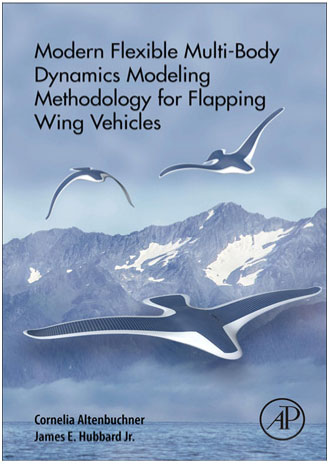
Flapping-wing vehicles are not only a topical application in modern aerospace research but are also an intriguing problem of fundamental interest to fluid dynamicists, aeroelasticians and biologists. They represent a pinnacle in design by natural selection for slow, highly-manoeuvrable flight in disturbed/turbulent atmospheric conditions. Advances in the modelling of flapping-wing vehicles are not only desirable from the design perspective but are also important in improving fundamental understanding of a complex interdisciplinary problem.
This book presents rigorous techniques for modelling the multi-body dynamics problem in a flapping-wing vehicle as well as flexibility in the surfaces. A modern energy-based Lagrangian approach is used to derive the equations of motion. The formulation is suitable for extensions into the areas of stability analysis and control design.
The book is concise at 169 pages and is organised in 7 chapters. Chapter 1 presents a historical review of flapping-wing technology, an overview of the modelling challenges and the objectives of this book. Chapter 2 gives a review of classical methodologies for multi-body dynamics and outlines the modern methods to be discussed in the book. Chapter 3 presents details of an experimental test platform used for model verification. Chapter 4 describes the derivation of the multi-body dynamical model, including flexibility, using Lagrange equations. Chapter 5 lists some simplified aerodynamic models for the unsteady flow around flapping wings, which give rise to the generalised forces and moments in the dynamical model. In Chapter 6, the modelling assumptions are verified using the experimental setup, and the combined aerostructural model is tested in flight simulation problems. Finally, Chapter 7 summarises the scope and contribution of the research methodology presented in this book and discusses recommendations for future work in this direction.
This is a useful test for academics, students and hobbyists interested in studying and building flapping-wing vehicles. Though the aerodynamic models employed here are quite basic, the dynamical model is general enough that more complex aerodynamic models can easily be substituted. This could pave the way to a better understanding of the flow physics and active/passive flow control mechanisms in biological flight.


